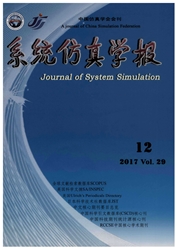

 中文摘要:
中文摘要:
在TD-SCDMA系统中,由于一个帧结构中包含了7个时隙,用来传送上行和下行业务,上下行时隙的分配被2个上下行切换点决定。这样的特点使得TD-SCDMA系统特别适合于当今越来越明显的上下行非对称业务的传输。目前使用的静态的分配上下行带宽的方法对于上下行非对称的业务的阻塞率特别大。针对TD-SCDMA系统可以动态调整上下行切换点的特点,分4种情况分析小区的干扰因子,其中着重分析了交叉时隙干扰;根据剩余容量和多媒体业务特点提出了一种动态调整上下行时隙切换点的呼叫接纳控制方案。仿真结果显示,本文所提出的接纳控制方案对于非对称业务的性能有明显的改善,对整个系统性能的提高起到很大的促进作用。
 英文摘要:
英文摘要:
In TD-SCDMA system, one frame contains seven slots, which are used to transmit traffic both in uplink and downlink. The slots allocation is determined by two switch points. This feature makes the TD-SCDMA system being appropriate to transmitting the growing asymmetric traffic.It is well-known that, the currently used static spectrum allocation strategy may result in high blocking probability to the asymmetric traffic between uplink and downlink. Based on the fact that one of the switch points can be dynamically adjusted, the adjacent cells interference under four conditions were analyzed and computed, especially the cross slot interference. By analyzing the residual capacity and characteristics of multi-traffics, a call admission control scheme with dynamic switch point between uplink and downlink was proposed. The Simulation results confirm that the performance of asymmetric traffic couM be improved greatly with the proposed scheme, and the whole system performance could also be greatly upgraded.
 同期刊论文项目
同期刊论文项目
 同项目期刊论文
同项目期刊论文
 期刊信息
期刊信息
